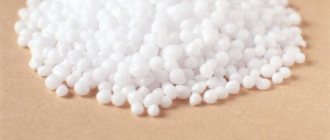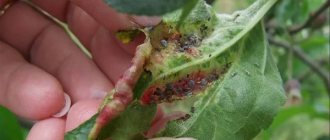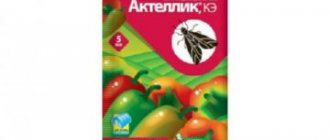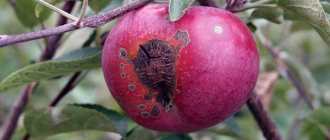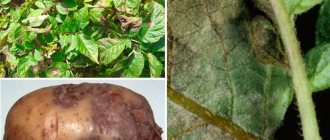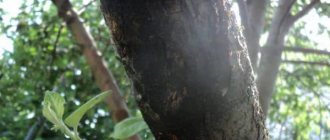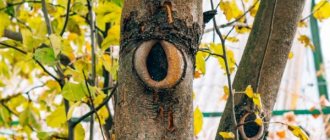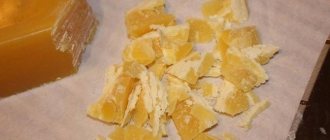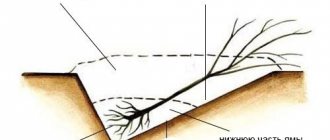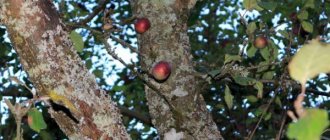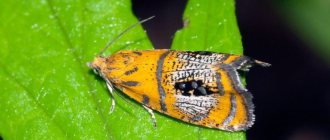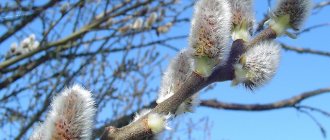The apple blossom beetle is an insect that is often found in areas with high humidity. The fact that this pest has settled in the garden is indicated by the following signs - buds that did not open on time and have a brown color against the background of spring greenery. They can secrete juice, and if you cut off a bud and examine it under a magnifying glass, you will notice a small hole in which the beetle managed to lay eggs.
In the spring, when cool temperatures remain for a long time and air humidity is high, the flower beetle can damage from 70 to 100% of the buds. And vice versa, the drier and warmer the spring, the less active the pest. We will talk about the biological characteristics of the apple blossom beetle, as well as methods of combating it in this article.
Biological and morphological characteristics of the pest
The apple flower beetle (Anthonomus pomorum L.) belongs to the weevil family. In early spring, gardeners can observe how very small bugs, about 0.5 cm in size, move from the soil surface towards the crown. Their body shape is elongated-ovoid, brownish-brown in color with a longitudinal line on the front back made of light hairs in the middle. A rostrum can be seen on the head. The front wings are crossed by two light stripes. Read about planting apple trees in spring here.
In winter, the insect sleeps in fallen leaves and tree bark, but as soon as the air warms up above 6 degrees, the weevils wake up and begin to move towards the crown. There they find swollen buds and not only begin to feed on them, but also lay eggs inside.
Causes of weevils
Weevils are especially active during the long spring period, since they can almost unhinderedly make their way into the ovary of fruit buds. Insects become active already at +6 degrees.
Pests in nature are destroyed only by some small birds, and then in small quantities.
If the orchard is located close to wild apple trees, then the likelihood of weevil infestation is very high. Another reason for the appearance of weevils is the presence of old dead bark on trees, in which they overwinter.
See also
Description and characteristics of the Orlinka apple tree, planting, cultivation and careRead
What harm does
Each female, having reached the crown of the apple tree, finds unopened buds and lays eggs in them. Their number can vary from 50 to 100 pieces. And since the insect lays one egg per bud, it turns out that a large number of flowers are damaged by one individual at once. A few days after laying, larvae appear in the buds and begin to feed on the stamens and pistils, completely eating away the insides of the unopened flower. In addition, the secretions of the larvae and the sap of the plant glue the petals of the unopened bud and it remains at this stage, gradually darkening, as if burned by fire, becoming like a cap. After two to three weeks, the larvae pupate in the flower, and then a little more than a week passes and young beetles emerge from the pupae, which can eat young foliage and pierce the ovaries. In mid-summer, weevils begin to prepare for hibernation. They climb under the bark of trees, and in the fall they hide in fallen leaves. There they wait for the coming of spring. This material will tell you about the cultivation and description of the onion variety Exhibition.
To reduce the population of weevils in the garden or completely get rid of them in the fall, it is necessary to remove fallen leaves, burn them or collect them in compost heaps, inside of which, during the process of decomposition, the temperature rises to 70 degrees and such an environment becomes destructive for the apple flower beetle.
How to reduce the risk of apple tree beetle damage
- Due to the coincidence of the development phases of the pest with the speed of spring awakening of apple trees, varieties with an average flowering period are most damaged. In early flowering apple trees , the most sensitive phase occurs when the flower beetle is not yet ready to lay eggs. In late bloomers - when it has already laid eggs. The harmfulness of the weevil is also influenced by the morphological characteristics of apple tree inflorescences.
- Invasion of the flower beetle most often occurs in gardens that are located next to forested areas .
- The beetle causes particular harm in cool, wet spring . The buds on the apple tree form slowly and the beetles have time to spoil them.
You will learn more about the apple blossom beetle and the fight against it in the video.
Control measures
Weevils must be combated, as they cause great harm and their population grows rapidly. Therefore, you can lose not only the apple harvest, but also individual trees. The plants will weaken, as the pest eats not only flowers, but also young leaves. Therefore, in the fall, after massive leaf fall, it is necessary to dig up the soil in the tree trunk circle, having first removed all plant debris. In addition, the following agrotechnical measures should be carried out:
- All bark coming from the trunk must be carefully removed and the area disinfected;
- In spring, whiten tree trunks. Add copper sulfate to the whitewash mixture;
- Install catching belts pre-lubricated with epoxy resin or very thick syrup. This is done to prevent pests from reaching the crown of apple trees. After a day or two, check the devices and destroy insects.
Before carrying out work to clear the garden of the apple blossom beetle, you need to coordinate the scope of work with your neighbors in the country. It is impossible to destroy the weevil in one area, because it will again begin to migrate from neighboring areas.
An effective method of controlling weevils is shaking them off.
Shaking off
As soon as the air temperature warms up to eight degrees in the morning, it is advisable to shake off.
The procedure is quite simple. They lay a tarpaulin, film or large burlap under the tree and, with a long pole, begin to lightly knock on the skeletal branches of the apple tree. To avoid damaging the tree, you can wrap burlap around the end of the stick and secure it with twine. Weevils fall onto the film. All that remains is to collect them and destroy them by throwing them into a bucket of salt water, kerosene or diesel fuel. The procedure must be carried out for several days in a row. Find out about planting and caring for the Volgograd tomato variety here.
As soon as the air temperature rises to 10 degrees, such an operation will not be effective - the flower beetles begin to fly. Then they move on to the use of chemical means of protection.
Chemicals
Nowadays, it is almost impossible to manage in gardens without chemical protection products. That's why insecticides are used. To combat gnawing pests, internal poisons are used. The so-called intestinal. When spraying apple trees and pears of the Talgar Beauty, Duchess and other varieties, they fall on the leaves and fruits, and the pests die when they eat them. Insecticides are best used in gardens in the fall, after the harvest is harvested, or in the spring before buds open. The following drugs are most often used in areas:
- Fufanon. You need 10 ml per bucket of water;
- Calypso. Amateur gardeners often use this drug, as it is completely safe for bees. Usage rate: 10 ml per ten-liter bucket of water;
- Kinmiks. Complex insecticide. Used to treat gardens against many pests;
- Tanrek. Even without adhesive, it is not washed off by rain;
- Decis. Trees are treated with the drug twice in the spring before buds open. 10 ml of insecticide is diluted in a bucket of water;
- DNOC (selinone). Used against overwintering pests in early spring. Definitely before the buds open. For 10 liters of water you need 100 grams of powder. But dilute it in a small amount of water, mixing thoroughly;
The powder is very poisonous and requires extreme caution when working with it.
- Karbofos. A thick, brownish liquid with a very unpleasant odor, which disappears after spraying. The emulsion is used at the rate of 30 grams per ten liters of water;
- You can also use Karate, Spark and other means of protection against the invasion of weevils.
This link will tell you how to grow tomatoes on the balcony.
If you treat orchards with the same preparation, flower beetles may develop immunity, so it is better to alternate insecticides, and even use some in combination with remedies against apple tree diseases.
When processing the garden, it is necessary to take precautions, because most chemicals are very dangerous for humans and animals. Rules for using insecticides:
- Store poisons under lock and key in tightly closed containers;
- When preparing the solution and spraying it, wear a gown, safety glasses, a respirator or a gauze bandage;
- To prevent poisons from settling to the bottom, the solution must be shaken periodically;
- After treatment, exposed parts of the body are washed with warm water and soap;
Spraying is carried out in calm weather. Best in the morning or evening.
Signs of the presence of a flower beetle on trees
This is definitely a flower beetle - no doubt about it
The first signal of the presence of the parasite is unopened buds during the flowering period of gardens. They are especially noticeable against the backdrop of lush colors. The painful parts of the inflorescences resemble burnt lumps, knobs of an unsightly brown color. You can detect parasites by shaking the trunk and branches of trees during the active solstice. Having examined the affected kidney, a thin hole is discovered, like a needle prick. This is the entry point for the weevil. The affected kidneys “cry”: they secrete juice that flows in drops and shimmers in the sun.
Prevention
In contaminated areas, garden pests multiply faster, so it is necessary to keep the plantings clean. Weeds and fallen leaves should be destroyed, as weevils overwinter in them. Weakened trees that do not receive the required amount of mineral or organic fertilizers also suffer more from pest attacks. If Simirenko, Mantet and other varieties of apple trees are fed, watered on time, fallen leaves are destroyed in the fall, and the tree trunk is loosened, then the likelihood of pest invasion will decrease significantly. In addition, it is advisable to carry out the following preventive measures:
- Regularly clean the trunks of loose bark. Seal hollows and cracks;
- In the spring, whitewash the trunks of apple trees with lime and copper sulfate;
- Apply trap belts in early spring. You can twist a rope of fabric or hay, soak it in karbofos and tie it tightly to the trunk. A funnel-shaped hunting belt is also suitable. Such traps must be checked frequently, and pests found there must be immediately destroyed;
- Affected buds must be removed to prevent the spread of the flower beetle;
- Select and plant varieties that are resistant not only to the apple blossom beetle, but also to other pests and diseases. These include: Union, Vasilisa, Talisman, Aphrodite and others.
Read about growing and caring for Ferruginous cherries in this article.
Some tips
To reap a good harvest of apple trees, you need to know how to deal with weevils first. It should be understood that it is much easier and more effective to prevent attacks from this individual.
Therefore, do not ignore preventive measures and adhere to the simplest tips that experienced gardeners share. So, what will help prevent the appearance of insect pests:
- try to maintain a distance when planting trees;
- make sure that mature trees are well ventilated;
- clean the garden in the fall and remove carrion;
- do not ignore preventive spraying, pruning and whitewashing of the trunk;
- Make it a rule to conduct a thorough culture check once a week.
Important! Flower beetles are always located under the leaves, or rather, on their back side. Therefore, if you suddenly notice that the green mass has been eaten away, it means that the weevil is attacking.
As a rule, catching this individual is not difficult in the morning. For this reason, try to make your rounds in the garden exactly at the time when the parasite wakes up and goes to eat your crop.
conclusions
The apple flower beetle, settling in the buds, lays larvae there, which completely eat away the unopened flower from the middle. And since the female is capable of laying one hundred eggs, one in each flower, the damage from the invasion of this pest can be very great - from crop loss to the death of young trees. Therefore, it is necessary to make every effort to protect the plants from the pest. There are the following control measures:
- Shaking off. In early spring, spread the film under the tree and tap the stem branches with a long pole. The apple blossom beetle is falling off. It must be collected and destroyed.
- Chemical means of protection. Treating the garden with insecticides such as Fufanon, Calypso, Decis, Karbofos and others. But when cultivating the garden, you should remember about precautions.
- We must not forget about preventive measures. After all, it is better to prevent the spread of weevils with the help of trapping belts than to fight their invasion later.
Preventive measures
Every experienced gardener knows that preventing the appearance of danger in the form of weevils is much easier than defeating multiplied beetles. So that you don’t have to spend all your free time fighting pests later, you can take certain measures in advance to reduce the risk of their occurrence:
- In autumn or early spring, it is necessary to remove old bark from trees.
- After the snow melts and the air warms up, you need to apply lime whitewash to the tree trunks.
- Additionally, the lower part of the trunks can be wrapped with hunting belts.
- It is necessary to regularly carry out treatment with various folk compositions: infusions of shag, tansy, tomato tops; wormwood infusions; spruce, onion or garlic tinctures.
- After the autumn leaves fall, the deciduous carpet should be burned or transferred to a compost pit.
- After harvesting the leaves, the soil around the apple trees must be dug up.
- When selecting apple trees for the garden, it is best to give preference to varieties resistant to the apple blossom beetle: “Red Amber”, “Red Poppy”, “Aphrodite”.
If preventive measures are taken in time, the battle with the pest will end before it can reach catastrophic proportions for the future harvest. Simple folk remedies will help reduce the likelihood of a pest, and pesticides will cope even with a large population of beetles.
Preventive measures
Simple preventive measures can prevent the harmful actions of the apple blossom beetle:
- The peeling bark serves as a winter refuge for weevils. It is removed, and the exposed areas are covered with a lime mixture.
- Fallen leaves, weeds and branches are raked into piles and burned. Some of the beetles will die in the fire, individuals buried in the soil will remain in the cold without shelter and freeze.
- The tree trunk area is dug up, removing weevils from the soil.
Preventative work is carried out in the fall.
Natural enemies
The destruction of the apple blossom beetle is carried out not only by gardeners, but by the natural enemies of the insect. Among them are birds and riders. Feeders are installed to attract birds. Allies in the fight against weevils are tits, flycatchers, and nuthatches. Parasitic wasps and flies lay eggs in the body of the weevil larva. The victim quickly stops feeding and becomes lethargic. Soon the offspring of the riders emerge from the body of the larva, which dies. The number of entomophages fluctuates in different years. Cases have been recorded in which 90% of the flower beetle larvae were infected.
